
Post updated to include the majestic Polar Bear in Svalbard
Norway may be famous for northern lights and world champion cross-country skiers, but it also home to unique and beautiful wildlife. Norway is committed to protecting its birds, mammals, reptiles and amphibians. It’s Ministry of the Environment strive to protect all animal nests, eggs and habitats needed to keep the native species thriving. It’s also in charge of regulating sport hunting, which helps pay for the Ministry’s activities.
Mammals
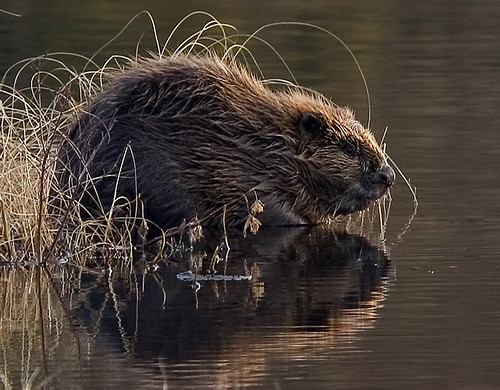
Beaver
credit
Norway is home to several species like the European beaver (Castor fiber) that is coming back from the brink of extinction. However, the populations for these species are still quite small and finding them in the wild is a matter of luck. But there are other mammals that the Norwegian visitor will be far more likely to spot:
American Mink (Mustela vision)
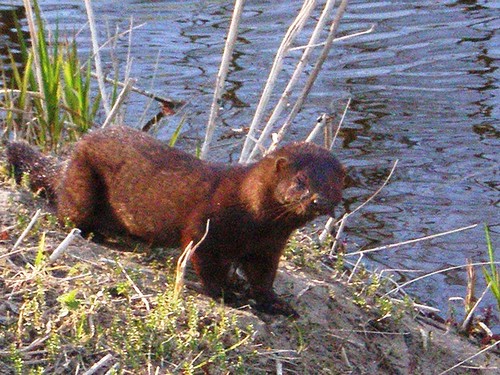
mink
credit
This is not considered a native species to Norway but so many have escaped from fur farms over the decades that they carved a firm foothold in the Norwegian landscape. They have almost completely wiped out Norway’s native mink species, the European Mink. Only some small islands off of the Norwegian mainland do not have American Mink populations.
Musk Ox (Ovibos moschatus)
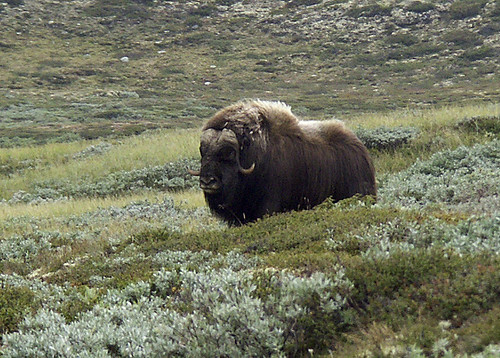
ox
credit
This is another immigrant to Norway, but has been heartily welcomed by the Norwegians. They arrived in the late 1940’s from Greenland and have breed expanding their range ever since. They prefer to live in the mountainous regions, so you won’t see one in the city. Despite their name, the Musk Ox is actually a goat and not an ox.
European Moose or Elk (Alces alces sub variety alces)

moose
credit
This is a native to Norway that has no plans on leaving. They are slightly smaller than moose found in North America, but they are still large enough to stay away from. Unfortunately, thousands of European Moose are killed in Norway every year due to collisions with trains or other vehicles.
Eurasian Red Squirrel (Sciurus vulgaris)

red squirrel
credit
One hundred years ago, this was the most common squirrel in Europe. But, since the introduction of the North American grey squirrel, Norway is one of the few places where these cheeky little rodents still exist. In summer they are a chestnut-red, but in the winter, their coats become more grey than red.
Reindeer (Rangifer tarandus)
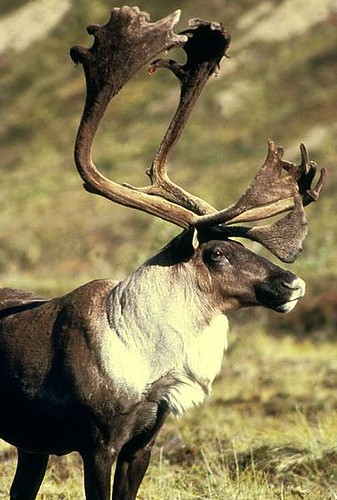
reindeer
credit
Called caribou in North America, Reindeer were thought to be domesticated in Norway long before horses arrived. Reindeer still exist in large wild herds as well as domestic herds in the country. Both bucks and does sport impressive antlers. They are native to Norway.
Polar Bear

Polar Bears
The Polar Bear is the worlds largest bear and land carnivore and is native to the Arctic Circle. In Norway you will need to travel to the island of Svalbard to get a glimpse of Polar Bears in their natural habitat. Our most popular package is the Arctic Experience and you can find more info.
Snakes
Because it’s located so far north, cold-blooded reptiles are hard to find in Norway, but all are protected by law.
Common Viper (Vibera berus)

viper snake
credit
Norway has only three snake species, but this is the one you want to keep an eye out for while visiting the southernmost parts of the country, because it’s the only Norwegian snake that’s venomous. However, these are very passive snakes and usually will only strike if frightened.
Grass Snake or Water Snake (Natrix natrix)
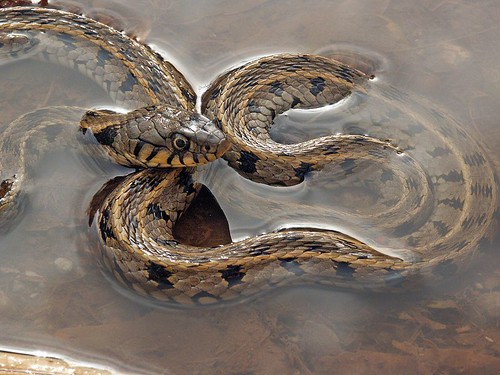
grass snake
credit
As its second common name implies, it likes to hang out in water or marshlands and generally have a good time. It’s much lighter brown than a Common Viper.
Smooth Snake (Coronella austriaca)
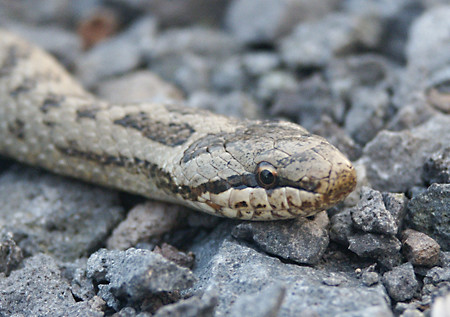
smooth snake
credit
This is a small, harmless snake colored in patches of stony grey and muddy brown.
Birds
Birds love Norway in the summertime, when fish and insects are plentiful, making it the perfect place to raise their young. But Norway is also home to many year-round species as well as “twitchers” (or, people who enjoy bird watching):
White-throated Dipper (Cinclus cinclus)
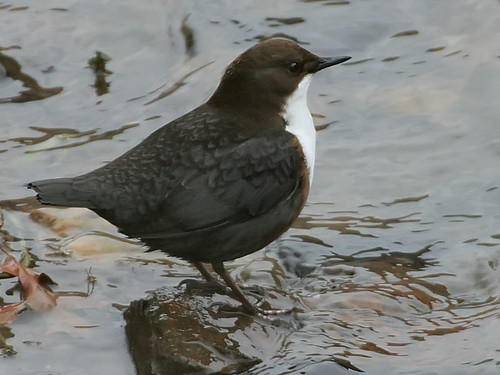
white throated dipper
credit
The Dipper isn’t just a common bird in Norway, it’s the official bird of Norway, considered a living symbol of the country. Although lacking any startling plumage, this is a highly intelligent bird that has able to adapt to many different environments. It prefers living near water, where it can be seen dipping under the surface to get food.
Common Buzzard: (Buteo buteo)

common buzzard
credit
This isn’t the buzzard made popular in Western movies. This is a graceful golden bird of prey capable of making spectacular aerial displays in its constant search for food. Although this species used to be common all over Europe (hence the name) it’s getting harder and harder to find.
Whooper Swan (Cygnus cygnus)
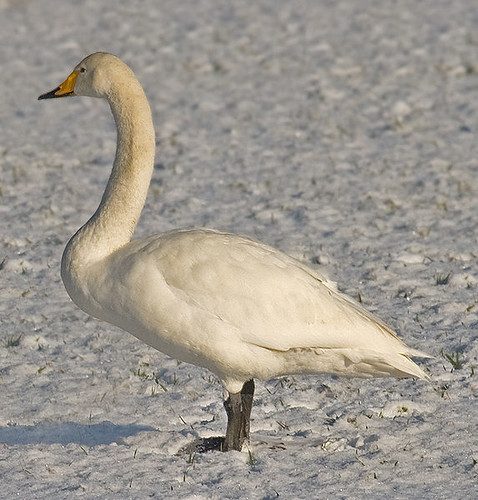
whooper swan
credit
This is one of the largest members of the goose family. They seem to have no fear, going up boldly to people to demand hand-outs, but they are protected under law, so do not get into a tussle with a Whooper Swan. Although they prefer to live near water, they will often fly inland for brief periods in order to find food.
Smew (Mergellus albertus)

smew
credit
This is a very strikingly coloured small duck that populated a lot of Norway’s parks and streams. The male is a sharp black and white, but the females have a rust colored head, white cheeks and a grey body. The males and females aren’t too picky about what breed of duck they mate with, so their companions may be an entirely different duck species such as Mallards.
Common Raven (Corvus corax)
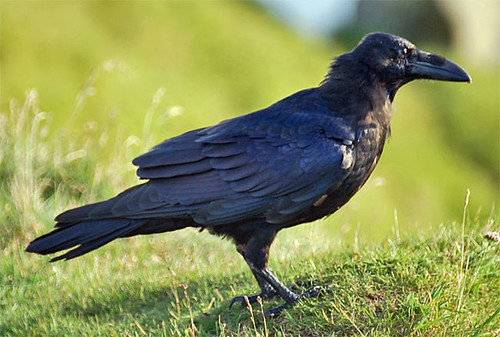
raven
credit
This largest member of the crow family is another bird that used to be seen everywhere in Europe, Asia and North America, but has been hunted to the northernmost corners of the world. Fortunately, Norway is one of them. They stay in their territories year round and are so loyal to their family members that they have been known to attack eagles that try to grab eggs, chicks or injured adults.
This entry was posted on Monday, November 23rd, 2009 at 12:08 pm; on the subject of Nordics, Norway, Scandinavia.